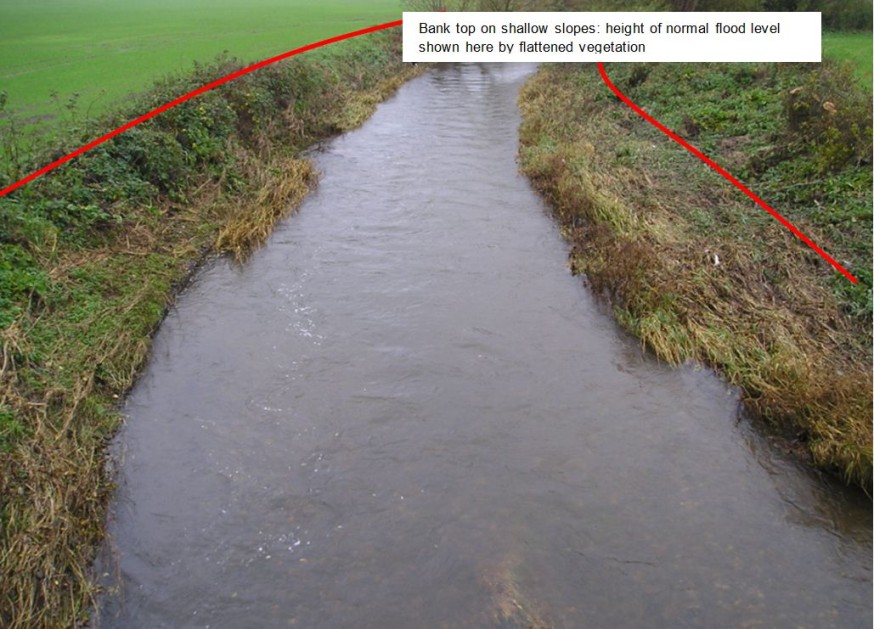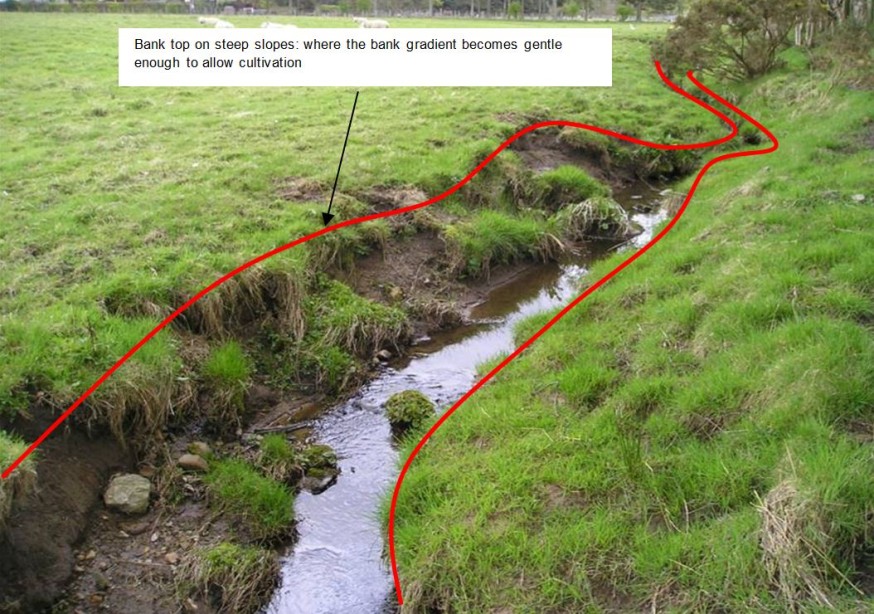Buffer strips along watercourses (GAEC 1)
This is an old version of the page
This is an old version of the page.
Date published: 1 January, 2015
Date superseded: 17 June, 2015
The aim of these rules is to protect water against pollution. The requirements restrict the storage, application of fertilisers and pesticides and cultivations along watercourses.
You must not:
1. apply organic manure* to any land which is situated within:
- 10 metres of any surface water*
- 50 metres of any well, borehole, etc for the supply of water
2. locate field heaps within:
- 10 metres of any surface water
- 50 metres of any well, borehole, etc, for the supply of water
3. apply chemical* fertiliser to any land in a way that makes it likely the fertiliser will directly enter any surface water
4. apply nitrogen fertiliser* to land if there is significant risk of nitrogen entering surface water, taking into account:
- the slope of the land, particularly if greater than 12 degrees
- any ground cover
- proximity to any surface water
- weather conditions
- the type of fertiliser being applied
5. cultivate or apply pesticides to land within two metres of the top of the bank* of surface water (pesticides can be used for spot application to control injurious weeds*, invasive species* and, after prior written consent of the Scottish Ministers and / or other statutory bodies, certain other weed species).
Flexibility for 2015
During the transition period covering 2014/2015 cultivations, there is some flexibility to allow limited cultivations within two metres of the top of the bank of surface water if you want to establish a green cover to stabilise soil and minimise potential weed problems.
Cultivating land within two metres of the top of the bank of surface water has been a breach of the existing General Binding Rules since they were introduced in 2008.
However, for 2015, only if you have ploughed and there is bare soil within two metres of the top of the bank of surface water, you will be allowed to carry out cultivations to establish a green cover in order to stabilise the soil.
Any cultivations to establish a green cover must be carried out in a way which will prevent soil loss from the cultivated area. A green cover excludes crops that are grown for a commercial purpose, for example, arable crops including crops that are under sown with grass.
Cultivating stubble within two metres of the top of the bank of surface water either before the 2015 crop is established, or after the 2015 crop is harvested, can’t be allowed due to the underlying GBR legislation.
The same flexibility does not extend to the application of fertilisers and pesticides. In these instances, the restrictions detailed above still apply.
Additional information
The location of the bank top depends on the bank profile and can be identified as follows:
1. where the bank is fairly steep and an obvious bank face exists, the bank top is the highest part of the bank where the slope angle changes from steep to gentle and cultivation could take place (see below)

2. where the bank face is very shallow and there is no obvious break in slope, the bank top is the height to which water normally reaches during the largest flood normally experienced during the course of a year
Note, the flood height used here excludes the water height reached during rare major floods. The normal flood level height may be difficult to identify because there is not a single indicator that can be used to locate it.
Depending on the site, the following indicators may be used:
- traces left by high-water including flattened vegetation, deposited sediment (typically sands) or a high-water line of washed-up matter such as twigs or leaves
- exposed coarse sediments such as gravel
- changes in the pattern or type of vegetation




*Explanation of terms
'Organic manure' means livestock manure and nitrogen fertiliser derived from organic matter (sewage sludge, composted vegetable waste, etc).
'Surface water' include coastal water, lochs, rivers, burns, streams and ditches which contain free water and also temporarily dry ditches.
'Chemical fertiliser' means fertiliser which is manufactured by an industrial process.
'Nitrogen fertiliser' includes both organic manures and chemical fertilisers.
'Top of the bank' depends on the profile of the bank - see additional information images.
'Injurious weeds' are species specified in the Weeds Act 1959: Spear Thistle (Cirsium vulgare (Savi) Ten), Creeping or Field thistle (Cirsium arvense (L.) Scop.), Curled dock (Rumex crispus L.), Broad-leaved dock (Rumex obtusifolius L.) and Common Ragwort (Senecio jacobaea L.).
‘Invasive species’ means giant Hogweed (Heracleum mantegazzianum), Japanese knotweed (Fallopia japonica), Himalayan balsam (Impatiens glandulifera) and rhododendron (Rhododendron ponticum).
Download guidance
Click 'Download this page' to create a printable version of this guidance you can save or print out.
